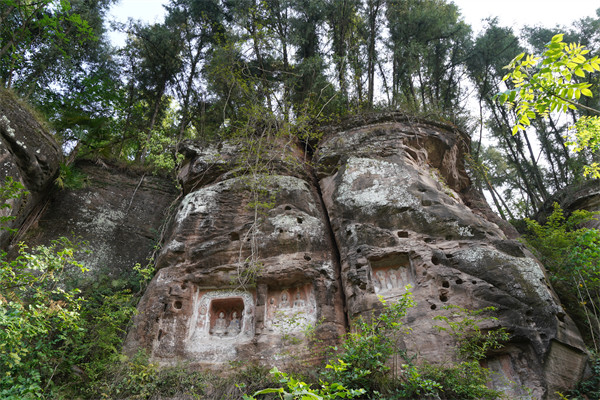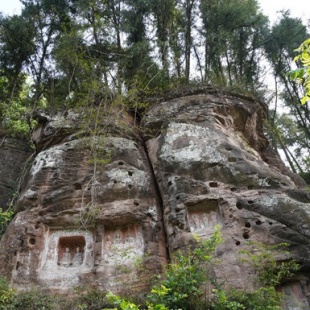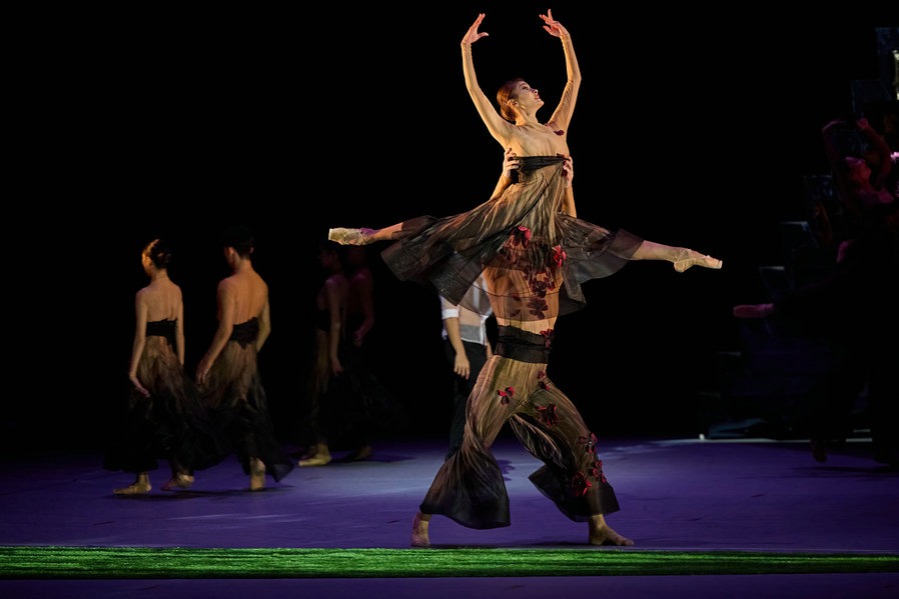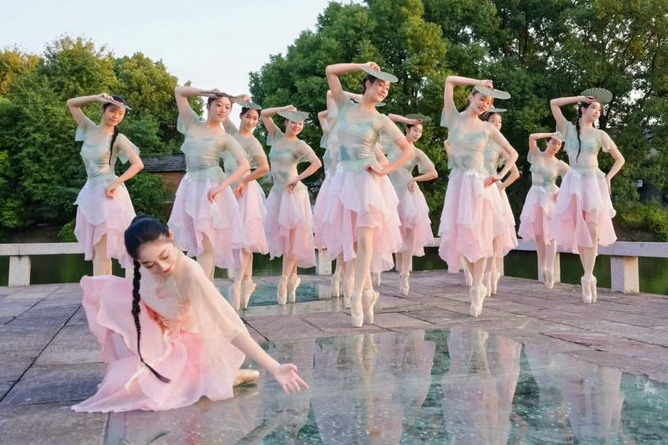Uncovering history of precious grottoes


Wearing a sun hat and armed with a sickle, Meng Yu carefully clears overgrown vegetation on a small hillside. At the summit lies a concealed cliff adorned with trees and rock-cut Buddhist and Taoist statues first built in the Tang Dynasty (618-907).
It's at Fengxing village in Anyue county, Ziyang, Sichuan province. Meng and his colleagues discovered the site in 2023 by chance while searching for a temple. They had a fruitless quest until dusk, then by chance a passing villager on a motorcycle mentioned the carvings and niches (a recess for statues) and led them to the site.
Meng, from Anyue Grottoes Research Academy, now returns regularly to monitor the site, which has been listed as one of Anyue's new discoveries of the ongoing fourth national census on cultural relics in China.
"Numerous stone carvings are scattered across secluded mountains and forests in the county. Even local officials may not know them all. Only some villagers are aware of their existence, but you need to bump into the right person," says Yang Xiuwei, head of the cultural studies department of Anyue Grottoes Research Academy.
Two drainage channels are carved into the cliff face, while the rock surface is dotted with rows of small round or square holes, indicating the existence of a wood structure built against the cliff.
According to villagers, there used to be niches of statues on the other side of the cliff until the 1970s, but they have collapsed. "The statues' sizes, proportions and lines indicate that the niches were constructed in the mid-to-late Tang Dynasty," Meng says.
"Anyue's followers of Buddhism and Taoism like to go to nearby niches to worship. The site has likely been forgotten over the past decades due to its remote location."
Deemed as the "Hometown of Chinese Stone Carvings", Anyue boasts over 100,000 surviving cliff statues from the Tang and Song (960-1279) dynasties, along with nearly 400,000 characters of engraved Buddhist scriptures.
It's believed that Anyue's stone carvings have stylistic and thematic connections with the Longmen Grottoes in Luoyang, Henan province, and the Dazu Rock Carvings in Chongqing.
The popular video game Black Myth: Wukong also features Anyue's stone carvings of exquisite Buddhist statues in its scenes, drawing widespread public attention.





































